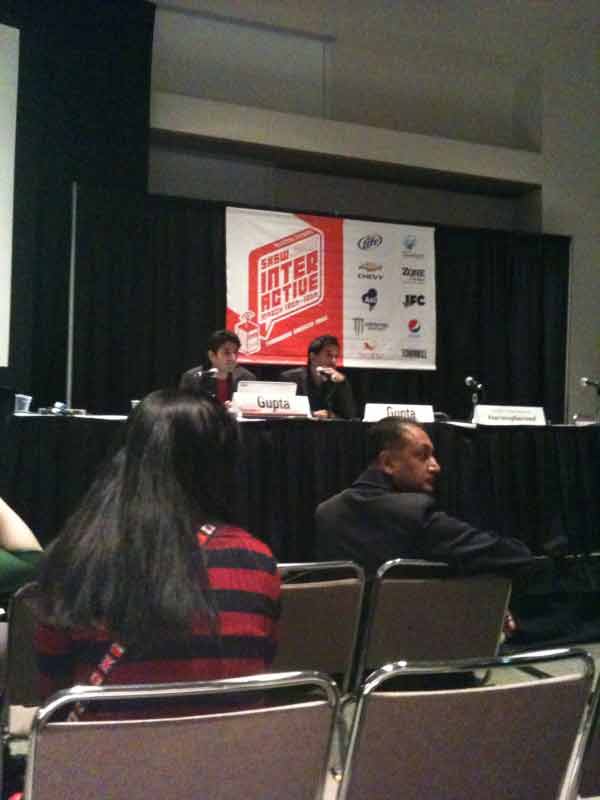Dr. Sanjay Gupta and his brother Suneel Gupta started the Kahani Movement with the hope of uncovering the stories that aren’t usually told. The brothers’ mission was to document the lives of people that had immigrated to the United States from India. They wanted to chronicle the hardships, the discoveries and the joys these people face.
The Guptas introduced the story of a recently immigrated Indian woman in 1968, in Detroit, Michigan. She had a flat tire and decided to look in the phone book for an Indian name for help (the brothers mentioned that at the time, about eight Indians lived in Detroit). She called the first Indian named she found, and the man’s roommate answered the phone. The man wasn’t home, but his roommate, who also happened to be Indian, offered to help. That woman and that man were the Guptas’ parents. That chance encounter created a marriage, a life, a family.
The brothers discussed how if you think about the ingredients of a story; the beginning the middle and the end, every story has some of the same parts, including a hero. In the above story, their mother was the hero. She preserved through fears and the unknown to reach out for help. Through a simple story you can discover how a family was created.
The Guptas went on to explain how the Kahani Movement isn’t strictly focusing on the Indian community, and how technology provides such an amazing opportunity to share stories. The project’s creators hope to eventually broaden the focus to more communities and to ultimately expand the long tail of this collaboration. The brothers outlined how to use new technologies to chronicle people’s stories:
1. Shift the conversation from the studio to the living room
2. Expand from audio conversations to film, photos and writings
3. Create a network of storytellers who are all collaborating to tell one common story
4. Make it approachable
5. Make is focused
Suneel Gupta expressed the overall feel of the project when he said, “Ordinary people have extraordinary stories to share, you just have to ask.”
An audience member asked the brothers how soon is too soon to document a story, for example telling the stories of Haiti earthquake survivors. The Guptas said it’s up the each individual, but to remember that details of events fade quickly. They recommended capturing conversations between family members, and to document those details and then publish or share later.
The Guptas ended the panel by putting out a call to action to the crowd, asking them to create their own Kahanis, and share the stories of others.
For more information about the Kahani Movement, visit www.kahanimovement.com/.



Permalink
So glad someone in class covered this.